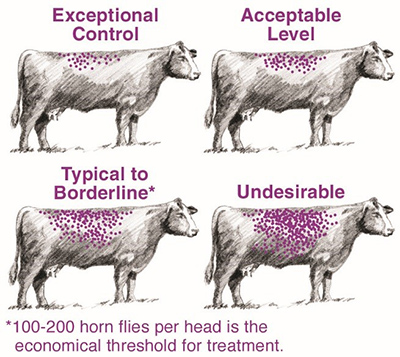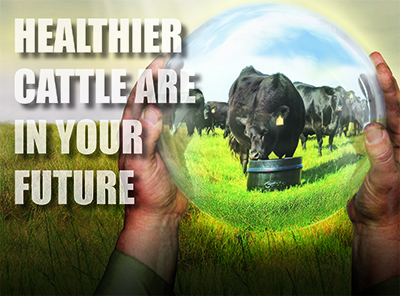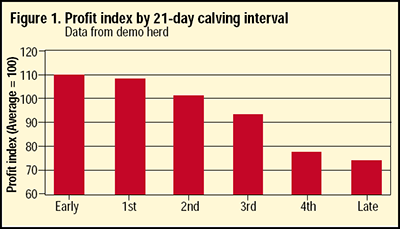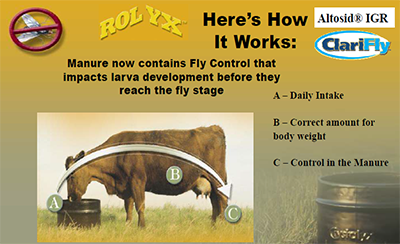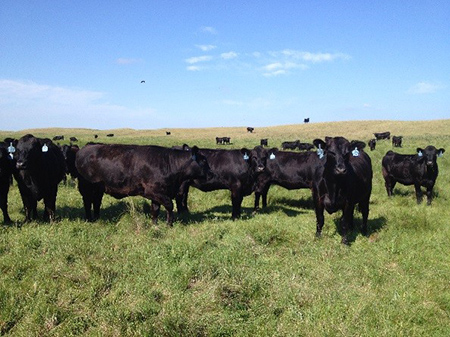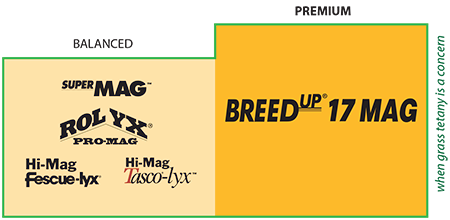Fly season is in full swing. Horn flies cost the beef industry upwards of $1 billion annually, in losses from poor cow and bull performance, lowered weaning weights, and disease. Producers spend upwards of $600 million dollars to combat files. When you consider what’s at stake, how do you know if your fly control program working for you and your cattle?
Treat your cows like 5-star recruits
I’m a huge football fan. As I sit here writing, it’s the first day of spring practice for my son’s football team. And on this day, it’s easy to observe which boys worked hard during the off-season and which didn’t. Who’s vying for a starter’s position and who’s in danger of being cut. In football the ground work for a successful program is laid in the many months leading up to the first practice, let alone the first game. One can draw similar comparisons when speaking about calving season with beef producers.
The future of CRYSTALYX: What is better nutrition?
With Agriculture, you can count on change, uncertainty, challenge, risk and opportunity. It’s only 5 months from 2017 when the new Veterinary Feed Directive becomes law of the land. This directive/ruling will regulate the feeding of Antibiotics in food animals giving oversight to veterinarians and has been well described in previous blogs by my colleagues.
Conception rate versus calving distribution
With bulls going into breeding pastures every day now, cattlemen easily understand the impact of a good conception rates on their bottom line. Another measure that can directly affect ranch profitability, is calving distribution.
Maintain beef and dairy cattle performance during fly season
With each new season there are things that we look forward to like green grass, warm days and watching the new calf crop develop. One thing we and our cattle do not look forward to is the suffering, annoyance and general loss of performance that excessive fly pressure can create. We have recently expanded our fly control options available in the CRYSTALYX® self-fed supplment line.
Organic, natural, just what are we talking about in livestock production
Organic or Natural were terms that seemed pretty descriptive and easily understood years ago when describing nutritional supplements used in Livestock production. That was then and now they have seemed to take on lives of their own as they can now also be used to describe very detailed marketing programs resulting in value-added products in both crop and livestock production. With the broader use of both Natural and Organic, we have found confusion with livestock producers when matching supplements to meet not only their nutritional needs but also complying with any marketing programs that they are targeting for specific animals.
Wet spring means ideal fly conditions
Weather forecasters are calling for El Nino weather patterns to continue through the spring, meaning wet and relatively mild conditions. Unfortunately, these are perfect conditions for the horn fly to propagate. Excessive horn fly populations can literally suck the profit out of your cattle operation! Biting flies reduce weaning weights, lower milk production and spread disease.
A supplement strategy for post breeding: Part 2
Very few heifers bred late or what would be deemed the third heat cycle, meaning most that did not breed AI were bred in the second heat cycle by clean up bulls. This was a marked improvement over previous years on a different mineral program, and supported our theory going into the demonstration that with better nutrition post AI breeding, we could perhaps achieve better embryonic survival once heifers went to grass and better clean up breeding thereafter.
A supplement strategy for post breeding: Part 1
Wow, time flies! March 21st was the official first day of spring, or was it? I live in Nebraska and my least favorite season of the year is spring; not because of all the new beginnings or starts, but because of Mother Nature’s Biopolar personality this time of year. I read a Facebook post this morning from a Sandhills Ranch woman whose family I worked for in my youth. She commented on how the temperature the morning of March 21st was in the single digits, highs in two days would be in the mid 70’s and then a snowstorm was predicted the following day. This is what I don’t like about spring; you never know what you’re going to get.
The draws are starting to green up
As I drive to and from work this week, I have begun to see a green tint in the road ditches and in the draws of pastures. Here in western South Dakota, we have already had a number of days in the 50’s and 60’s and even a few over 70 degrees. While we can sure use more moisture, there is enough in the ground to start some cool season grasses. Several long range forecasts have predicted that the upper plains should see a good deal of moisture in March. Either way, grass tetany season is about to start…
